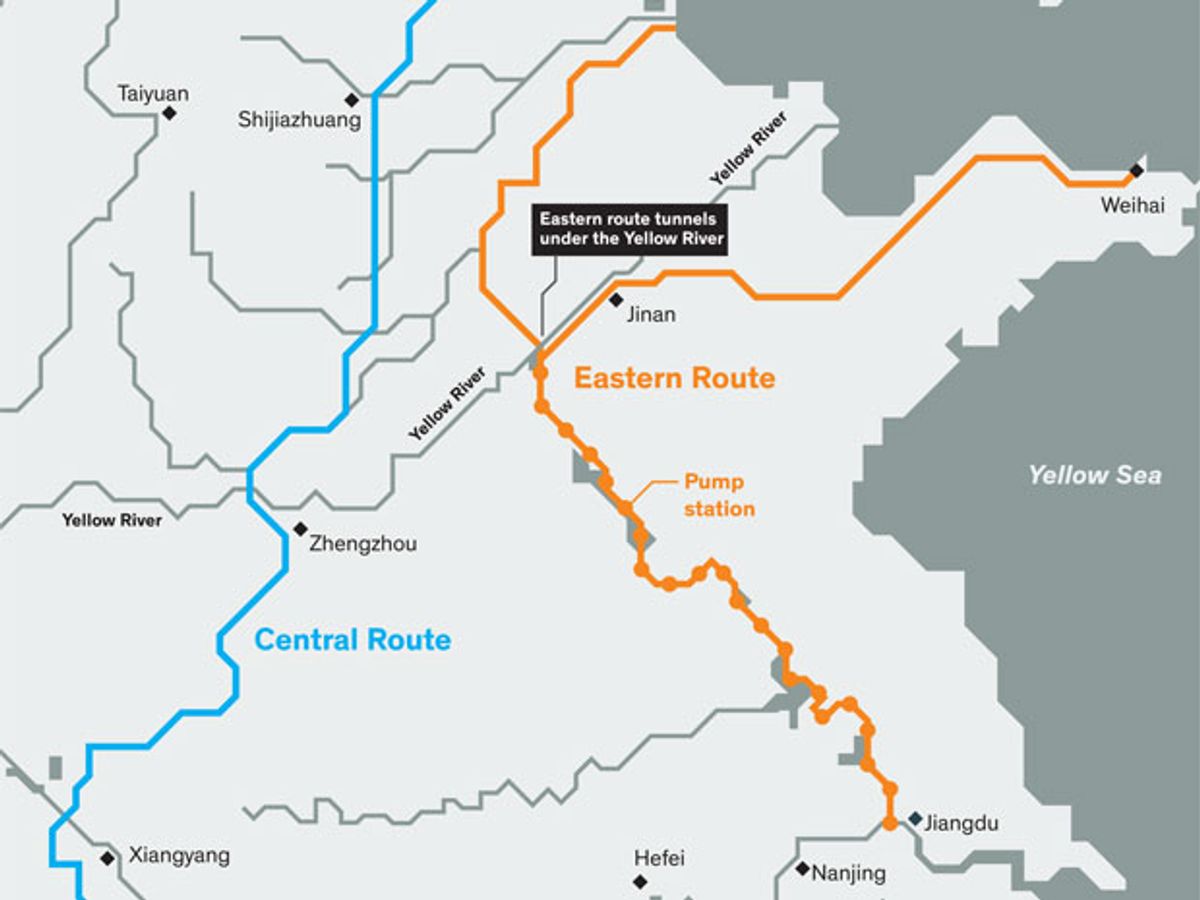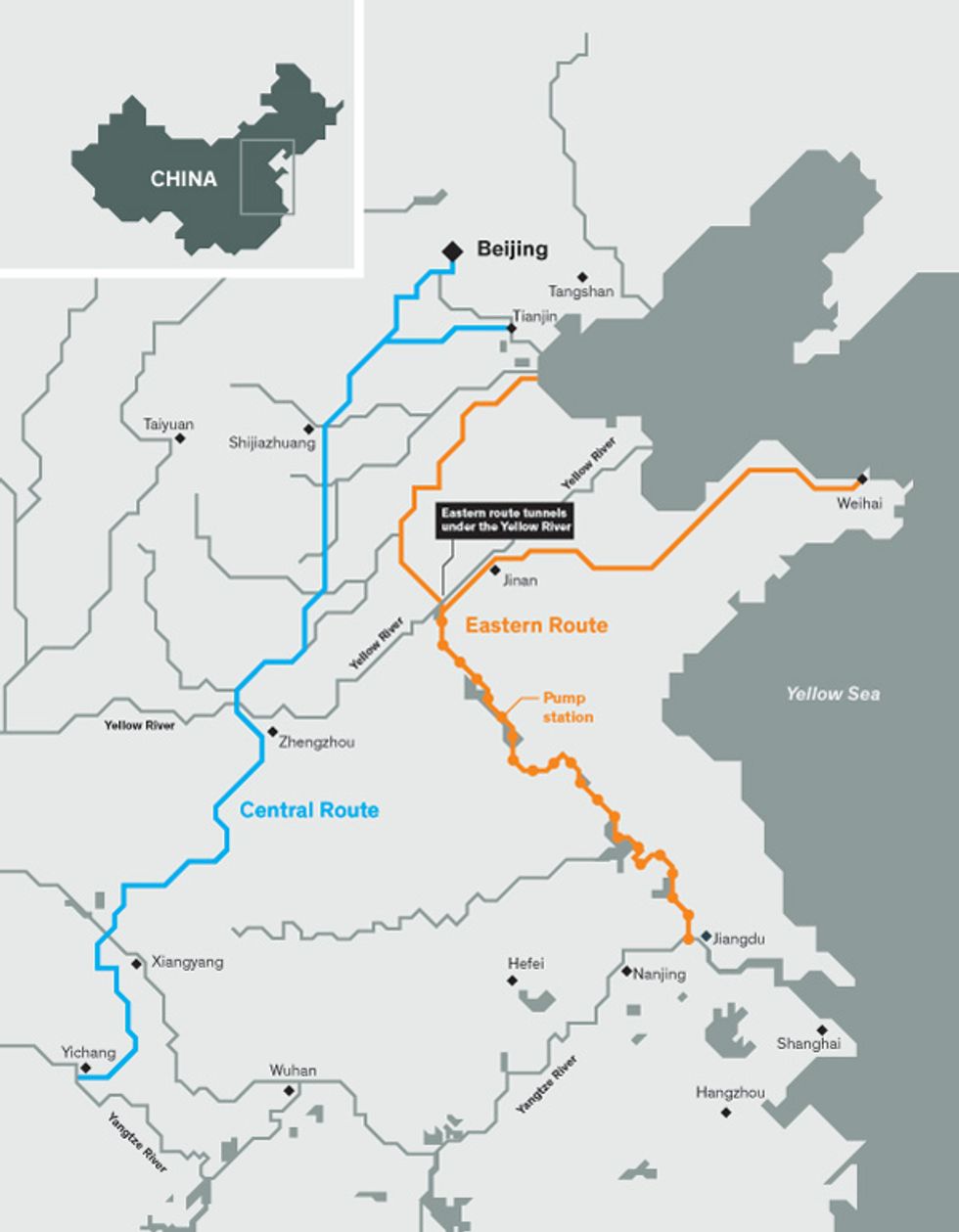The Great Canal of China
Bringing Water to the Thirsty North

China’s engineering motto could be summed up as “Go big or go home.” In the past decade the country has built the largest hydroelectric dam and the most expansive high-speed rail network in the world. Now it’s working on the planet’s largest water transfer project, the first route of which is scheduled to begin operations in 2013.
The South-to-North Water Diversion Project will realize an old dream of Mao Zedong: to bring water from monsoon-swept lands, where it’s plentiful, to the north’s booming industrial cities, where it’s not. The eastern route, which will be put into service this year, takes water from the Yangtze River and carries it up the seaboard provinces. The 1467-kilometer-long canal will be the longest in the world; it will initially be capable of pumping 8.8 million megaliters of water annually, enough to fill 28 000 supertankers. Future expansions will eventually increase its capacity to 14.8 million ML per year.
Much of the eastern route builds on the Beijing-Hangzhou Grand Canal, some parts of which date back to the 5th century BCE. The ancient canal held mostly stagnant water, which was good enough to float barges filled with grain to the north. When the new eastern route opens for business, it will use 34 pumping stations, sucking 366 megawatts, to transport water instead. The pumps will propel the water half the way, up gradually rising terrain; then the canal tunnels under the Yellow River, after which gravity carries it the rest of the way.
According to China’s Ministry of Water Resources, the total cost for the eastern route is expected to top US $8.5 billion, which includes nearly $2.5 billion for water treatment facilities. That’s necessary because the canal travels through a number of industrial zones and densely populated areas, and water pollution is a serious problem. Other possible consequences of the eastern route are water shortages in the south, damage to the Yangtze watershed, and high water prices in the north (as a result of the project’s massive expenses). Yet the ministry hasn’t released anything resembling a cost-benefit analysis, and the agency is pushing ahead with the project’s next phase.
The project’s central route, which will bring water to Beijing and Tianjin, may be completed in 2014. That canal may cost another $37 billion, according to the ministry, and it requires the expansion of a reservoir and the resettlement of about 345 000 people. A third and final route in the west would transport water from the Tibetan plateau, but the Chinese government has reportedly postponed that technically challenging and politically controversial route.

